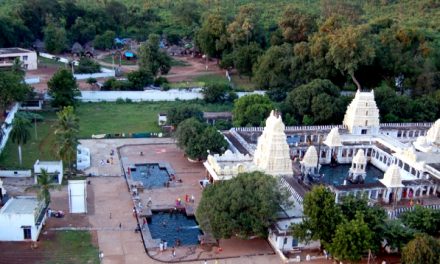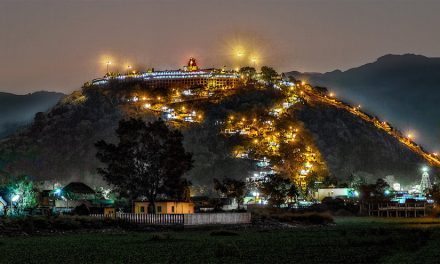The famous Ganga monarch Chodaganga, after construct1ing the present Sri Jagannath Temple in the 12th century A.D., confirmed the old endowments of Jagannath, made new endowments and laid the foundation of a sound administration of the temple. Madala Panji eulogistically records the extensive endowments in land and fabulous gifts of gold made by king Anangabhima Deva, who was credited with organising the Chatisanijoga and instituting numerous Bhogas and Yatras. Then the Suryavamsi rulers who succeeded the Gangas enriched the coffers of temple by their numerous gifts.
Among the movable properties of Lord Jagannath, besides the temple elephants, horses, furnitures and utensils of various kinds, the most precious gems, diamonds and other semi-precious stones are preserved in the Ratna Bhandar. This treasury of the temple has been enriched by the contribution of the devotees from all over India, among whom the Hindu kings of Orissa were the most illustrious donors.
According to Madala Panji, King Anangabhima Deva, in addition to his numerous grants of land, had donated 2,50,000 marhas (weight current in Medieval Orissa: 1 marha = 70 grains = ½ total = 5.8319 grams) of gold for preparing the ornaments of the Lord. The Suryavansi rulers who succeeded the Gangas on the throne of Orissa were great devotees of Lord Jagannath and enriched the Ratna Bhandar with their liberal gifts of gold and other jewels.
One of the inscriptions of Gajapati Kapilendra Deva discovered on the wall of the temple of Jagannath records that in the 41st Anka (1466 A.D) he came to worship Jagannath and gave a number of utensils and ornaments. A supply of gold was brought by a number of officers and placed with other offerings in the audience hall. According to the rules and practices of the Temple, whatever jewels, gold and silk are offered to the Deities by the pilgrims are to be stored in Ratna Bhandar.
The fabulous riches of the temple of Jagannath had induced the Muslim invaders to raid and plunder the temple from time to time, the worst being that of Kalapahad in 1668. During the time of Raja Purusottama Deva of Khurda, even a Rajput General named Kesodas Maru was induced by the Mughal Subedar of Cuttack to plunder the temple of Jagannath. On the pretext of coming on a pilgrimage to Puri during the Car Festival, Kesodas occupied the sacred temple by force and looted it and stopped the daily puja, ceremonies, etc., of Lord Jagannath.
Raja Purushottam Deva came with a mighty force to rescue the temple from the hands of Kesodas but was defeated. In spite of several raids and plunder the Ratna Bhandar of Jagannath still remains a valuable asset of the temple. M.M. Chakravarti noted in 1893 that many of the ornaments given to Lord Jagannath in 1466 A.D. were still in use.
The total list of the valuable jewels of Lord Jagannath, which includes gold ornaments, pearls, diamonds, corals etc., is to be found in the Record-of-Rights (Part-IV) prepared under Puri Sri Jagannath Temple Act, 1952. There are 150 items of gold ornaments in Bahar Bhandar (outer treasury) which include three gold necklaces (Haridakanthi Mali) weighing more than 120 tolas (1 tola = 11,6638 grams) each; Suna Shri Bhuja and Sri Payara of Jagannath and Balabhadra weighing 818 and 710 tolas respectively; Suna Mukutas or gold crowns of Jagannath, Balabhadra and Subhadra weighing 610, 434 and 275 tolas respectively, and various other gold ornaments, some of which are set with precious stones.
The Bhitar Bhandar (inner treasure) has 180 items of jewelry which include 74 items of pure gold ornaments, some of which weigh more than 100 tolas, plates of gold, pearls, diamonds, corals etc., and 146 items of silver articles, some weighing more than 500 tolas each. The outer treasury with three locks and the inner treasury with double locks were under the charge of the Raja of Puri who was the Superintendent of the temple. One key remained with the Raja, one with the Bhandar Nayak, and the third key of the outer treasury with the Bhandar Mekap.
In accordance with the provisions of Sri Jagannath Temple Act, 1954, Section 15, safe custody of the Ratna Bhandar is now vested with the Sri Jagannath Temple Managing Committee. Besides the income derived from the Satais Hazari Mahal, the Maratha had assigned certain lands with a revenue of Rs.27,000 for the support of the temple of Jagannath at Puri. This came to be known as Satais Hazari Mahal for the amount of revenue it was yielding) and the Ekharajat Mahal. (The Ekharajat or Ikharjat is an Arabic word meaning expenses. Ekharajat Mahal literally means land assigned for expenses.)
The important sources of income of the temple are the sums realized by annually leasing out the rights to what is known as Baje Mahals. The main Baje Mahals are the right to prepare and sell Nirmalya inside the temple premises, the right to sell sweetmeats, the right to sell earthen lamps (Dipa) inside the temple; the right to collect money from the pilgrims at Rohini Kunda, Shri Gundicha Mandira and Paduka Kunda; the right to sell flour and spices in the temple, etc.
Among other sources of income, mention may be made of the fees realised from the pilgrims for having their names inscribed on the stone floors of the temple enclosure, fees realised from the Sevakas at Sadhibandha or first appointment, the sale proceeds of Kothabhoga mahaprasad after Kheis are distributed to various Sevakas, Sale proceeds of the wood and cloth used in the cars, fees realised from Dhwajalagi or for having flags and strips of coloured cloth hung from the temple tower, Parimanik or fees realised from the pilgrims for going near the deities beyond the time fixed for Sahanamela, fees for using fans, flyflaps or lighted torches before the Deities, and other miscellaneous receipts. Besides some other lands and houses in Puri town, other places are under direct possession of the temple.
Receipts from Pindika accounts for a substantial income to the temple. Whatever is offered to the Deities on the Ratnavedi, either in the jars placed there or on the Simhasana, goes to the temple fund after paying a small share to certain Sevakas.












